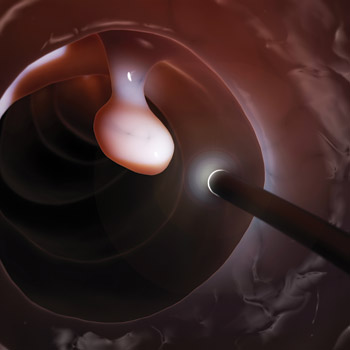Proper diagnosis takes time, reflection
A new format for the inpatient history of present illness may help, one expert said.
When the 49-year-old man presented to Stanford Hospital & Clinics with an unprovoked deep venous thrombosis (DVT), there were two others in the room. Speaking in Spanish through a translator, the patient's mother told the doctors that her son had never had this problem before. The third person identified himself simply as an Uber driver.
“Who is he [to the patient]?” presenter Kelley M. Skeff, MD, PhD, MACP, the faculty attending doctor that day, asked the audience at the Diagnostic Error in Medicine 11th International Conference, held in November 2018 in New Orleans. Upon reflection, audience members considered the possibilities: a friend, a coworker, his partner.
If the “Uber driver” was also the patient's partner, it might increase the likelihood of HIV or AIDS, revealed Dr. Skeff, who went home that night and realized that he had missed the diagnosis—again. Twenty years earlier, he said he and his team overlooked the possibility of AIDS in a patient with a pulmonary embolus. “We were all hunting for the infection caused by AIDS and hadn't realized this relationship; however, if you have time to think, get on the computer, and search using the terms HIV and DVT, the relationship between AIDS and venous thrombosis and pulmonary embolism shows up,” Dr. Skeff said.

Even though such a search takes just a few seconds, proper diagnosis requires time to think, research, share, and learn, he said. But in modern medicine, “We have a system with people moving through care provision repeatedly, with little time for reflection,” Dr. Skeff said.
Every nine minutes, someone in a U.S. hospital dies due to a delayed or missed diagnosis, according to the Society to Improve Diagnosis in Medicine (SDIM). He commended the organization for addressing the problem head-on. “Most say how many accidents they've prevented; SIDM says how many we've caused,” said Dr. Skeff, a professor of medicine at Stanford University School of Medicine in California.
Drawing on nearly 50 years of teaching medical trainees, he said improving diagnosis is all about time: learning from time and making time for learning.
Learning from time
When considering educational reasons for diagnostic errors, Dr. Skeff focused on what is taught in medical education. Namely, he questioned the dominant approach of teaching trainees to take and relate a patient history.
Many physicians find the format of a typical inpatient history of present illness (HPI) frustrating and unclear, Dr. Skeff said. “We have been teaching people to write the history in a manner that can be confusing, often blurring the evolution of the patient's illness within the text. … We tell patients, students, residents, and physicians to convey the patient's story in paragraph form, but we think in analytical form,” he said.
To improve upon the historical way of telling the patient narrative, Dr. Skeff recommended an alternative format called the chronology of present illness (CPI), which overtly maps patient symptoms to time. “It's different from the usual prose history of present illness in that the timeline is clear,” he said, noting that the format may help physicians avoid diagnostic errors.
To develop the timeline, the physician asks patients to “go to the beginning” to when the symptoms started and highlight what changed and when it changed, said Dr. Skeff. “I've found that patients … are gratified that I was open to their fully describing what has happened.”
Drawing from John Sweller's Cognitive Load Theory, he noted that there are three types of cognitive load that impact working memory, which can only hold five (plus or minus two) concepts at one time. The intrinsic load of a task includes the essential aspects that must be performed, the germane load allows the person to deliberately learn, and the extraneous load contains nonessential aspects and “blurs the system,” Dr. Skeff explained.
Notes in paragraph form can have more of the extraneous load than the other more useful types of cognitive load, he said. To elucidate the amount of extraneous load in the paragraph form, Dr. Skeff recommends to students, “Please cross out all the words that you're not going to use in your cognitive analysis of this patient.” In contrast to prose paragraphs, notes that use the outline-like format of the CPI contain more essential information that is relevant to the diagnostic process, Dr. Skeff said.
In addition, in a system that trains people to tell a history that supports their diagnosis, important details can be omitted if they are confounding, he noted. This legalistic approach, supporting one's hypothesis with the story, has pitfalls, Dr. Skeff said. “We may leave out patient symptoms that we don't understand and they may never surface again, as fast as we're working today in our medical care system,” he said. “Instead, by clearly documenting the evolution of the patient's illness, we can identify both types of issues, those that we do and do not understand, potentially decreasing diagnostic errors caused by illnesses with unfamiliar findings.”
In a pilot study, 22 of Stanford's internal medicine residents were asked to use the new format for all new patient histories during a week of night-float rotation. The residents reported improvements in the quality of patient interactions, the clarity of written notes, the quality of the assessment and plan, and the clarity of their verbal morning sign-out, according to results published in the February 2017 Journal of General Internal Medicine.
Making time for learning
In addition to using time to better understand the patient's illness, Dr. Skeff said medicine must also address current time-based challenges to the profession. “Although physicians are doing a lot, we're commonly using the ingenuity that we have in figuring out how to do things faster,” instead of using time for reflection and enjoyment of purpose, he said.
One well-known challenge is physician burnout, which also happens to be an important contributor to medical errors, Dr. Skeff noted. In a recent survey of more than 6,500 practicing physicians, the 54.3% who reported symptoms of burnout were more likely to also report making a medical error in the prior three months, according to results published in the November 2018 Mayo Clinic Proceedings.
To make matters worse, no physician specialty or subspecialty saw improvements in burnout from 2013 to 2017, according to the Medscape Lifestyle Report 2017, which surveyed more than 14,000 physicians. “Physician burnout is a cause of diagnostic errors, and we're getting worse with time. If this were a study of patients on a drug, you would have stopped the study,” said Dr. Skeff.
He then made a bold statement: “The burnout rate should be 100%, but we've trained [physicians] to do whatever is required—to take care of patients at all costs, even if you don't have time to do it well,” he said.
This lack of time is the reason that many of the young, vibrant, smiling people who go into medicine may not stay that way for long, Dr. Skeff said. “If we're bringing in people with a love of humanity and love of science and depriving them of the time to think and the time to care, it's no shock that [burnout] is the result,” he said, “because if you take the heart and soul away, it won't matter what you do with the mind.”
Dr. Skeff recounted input from trainees and graduates. One told him he was worried that Dr. Skeff would “slow him down” on the rotation. Another former resident is starting a new company after deciding to go back to science because there was never enough time to spend with patients.
Little by little, time is being stripped away from clinicians, who either get used to it being gone or leave the profession, Dr. Skeff said. “And now we're seeing physicians quit, residents becoming depressed, and two to three medical school classes per year of physicians committing suicide.”
From the dread of documentation work to the soul sucking of the “sepsis alert,” time has a crucial impact on physicians' gratification with their work and must be considered as the field moves forward, he said. “It doesn't mean that all of the work we've been doing to analyze and understand the thinking process isn't important,” Dr. Skeff said. “But there's something very serious going on in our field that, if we don't remedy [it], the rest of the work will go by the wayside.”



